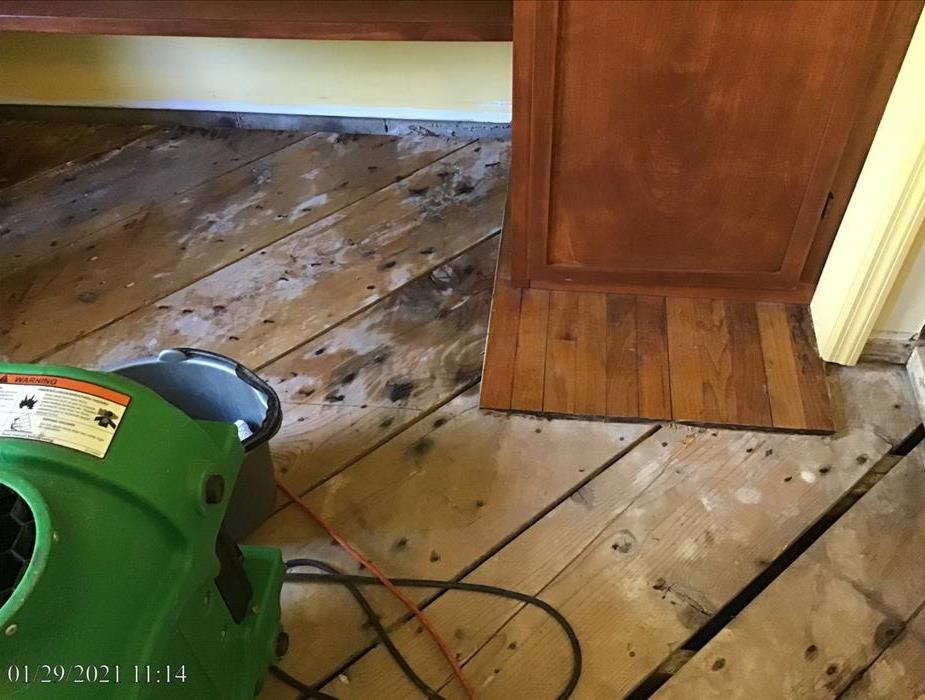Mold Awareness Month - Remediation The Right Way
8/1/2023 (Permalink)
Strap on your knowledge caps and get ready because August is here, and it's mold awareness month! With the storm season underway, we have decided to pull back the curtain on how we approach mold remediation the right way. Dealing with mold proactively is extraordinarily important, and we are using this month to give you valuable information about how it can be harmful and how we as expert remediators go about getting mold under control.
Mold is a fungus that grows in dark, humid conditions. Often, the source of the growth is a past water intrusion, either via flood or interior loss. If a water loss occurs and is not dried out expeditiously and thoroughly, mold has a chance of growing. In fact, that growth can begin as early as 48-72 hours after the water loss occurs!
A mold issue can be dangerous for residents, which is why you should never attempt to demolish moldy materials such as drywall or carpet on your own. Licensed remediators take several steps to remove mold and create a safe environment once the job is done.
When mold is mitigated by a licensed remediator, there are steps that must be followed in order to ensure the success of the job.
- Inspect the affected area for visible mold.
- Advise client to hire a licensed mold assessor to determine scope, perform a fungal screening, and create a protocol.
- Seclude affected area with containment.
- Place HEPA air scrubbers and dehumidifiers to condition the environment.
- Demolish affected porous materials.
- Dispose of debris.
- Clean the affected area.
- Clean ducts and HVAC system.
- Continue scrubbing the environment for 24 hours after demolition is complete.
- Assessor returns to test again and confirm that mold counts are no longer elevated.
By following the protocol, the risk of mold returning or being dangerous is minimized, which is why you should always leave this sensitive work to the experts. Luckily, SERVPRO® is here to help!

 24/7 Emergency Service
24/7 Emergency Service
